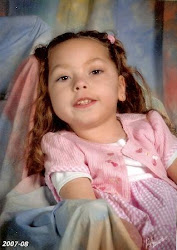University Hospital Aachen, Germany. vramaekers@skynet.be
Cerebral folate deficiency (CFD) can be defined as any neurological syndrome associated with low cerebrospinal fluid (CSF) 5-methyltetrahydrofolate (5MTHF), the active folate metabolite, in the presence of normal folate metabolism outside the nervous system. CFD could result from either disturbed folate transport or from increased folate turnover within the central nervous system (CNS).
We report on a novel neurometabolic syndrome in 20 children, which we term 'idiopathic CFD'. Typical features became manifest from the age of 4 months, starting with marked unrest, irritability, and sleep disturbances followed by psychomotor retardation, cerebellar ataxia, spastic paraplegia, and dyskinesia; epilepsy developed in about one third of the children. Most children showed deceleration ofhead growth from the age of 4 to 6 months. Visual disturbances began to develop around the age of 3 years and progressive sensorineural hearing loss started from the age of 6 years. Neuroimaging showed atrophy of frontotemporal regions and periventricular demyelination in seven children, slowly progressive supra- and infratentorial atrophy in three children, and normal findings in the remainder. Because active folate transport to the CNS occurs through receptor-mediated folate receptor protein 1 (FR1) endocytosis, DNA sequencing of the FR1 gene was performed and found to be normal. However, CSF protein analysis revealed a non-functional FR1 protein, suspected to result from either post-translational defects of FR1 protein N-glycosylation, the presence of folate antagonists with irreversible binding, or autoantibodies blocking the folate binding site of FR1. Oral treatment with 5-formyltetrahydrofolate (folinic acid) should be started in low doses at 0.5-1mg/kg/day, but in some patients higher daily doses of folinic acid at 2-3 mg/kg/day are required to normalize CSF 5MTHF values. This proposed treatment protocol resulted in a favourable clinical response in patients identified before the age of six years while partial recovery with poorer outcome was found beyond the age of 6 years.
Careful clinical and EEG monitoring should be performed 1, 3, and 6 months after the beginning of treatment. After four to six months of folinic acid treatment, CSF analysis should be repeated in order to prevent over- or under-dosage of folinic acid. Secondary forms of CFD have been recognized during chronic use of antifolate and anticonvulsant drugs and in various known conditions such as Rett syndrome, Aicardi-Goutières syndrome, 3-phosphoglycerate dehydrogenase deficiency, dihydropteridine reductase deficiency, aromatic amino acid decarboxylase deficiency, and Kearns-Sayre syndrome. The pathogenic link between these underlying specific disease entities and the observed secondary CFD has not been resolved.
PMID: 15581159 [PubMed - indexed for MEDLINE]
Thursday, March 27, 2008
Subscribe to:
Comments (Atom)


